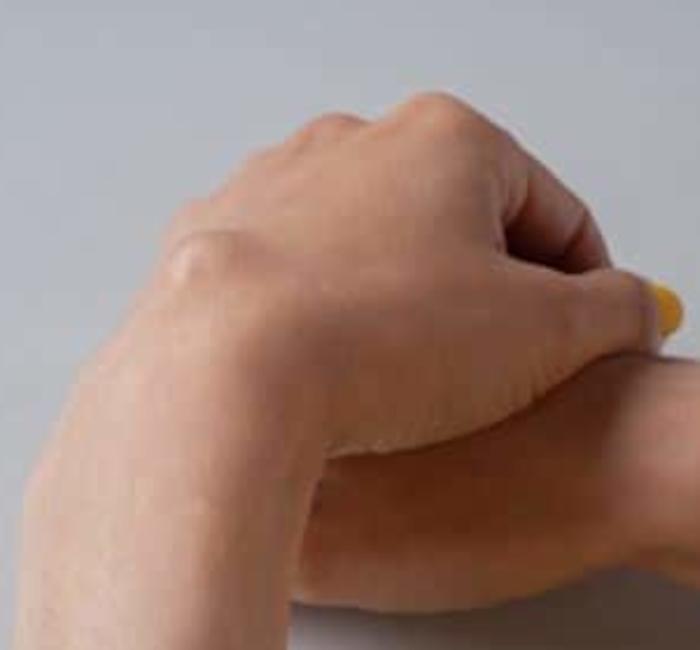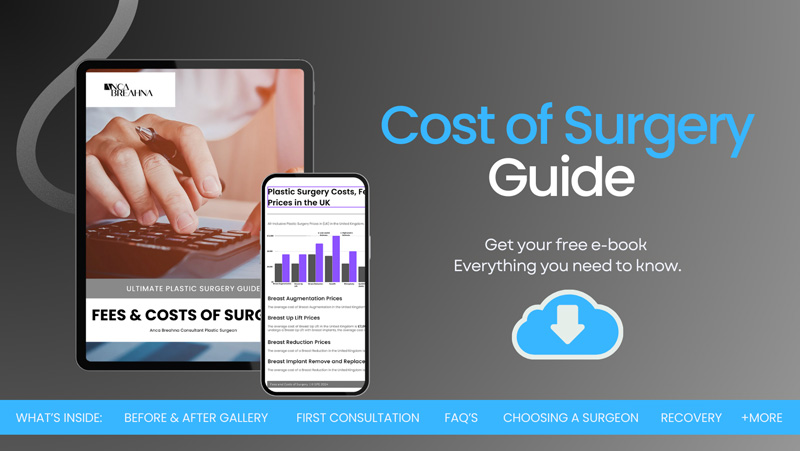Procedures
Lipoma Excision

When you discover a lump beneath your skin, it’s natural to feel concerned. However, if your doctor has diagnosed this lump as a lipoma, you have likely been informed that it is a benign, non-cancerous tumour composed of fat cells. Despite being harmless in most cases, some individuals opt for removal due to various reasons including discomfort, cosmetic preference, or on rare occasions, medical necessity. This surgical procedure is known as lipoma excision.
Lipomas are the most common form of soft tissue tumour and can appear anywhere on the body where fat cells are present. These growths are generally slow-growing and are most commonly found in middle-aged people, although they can occur at any age. The texture of a lipoma is usually soft and, upon touch, they may feel doughy and can move slightly under the skin.
For many, lipomas are not bothersome and do not require any treatment. However, if you experience pain or discomfort, or if the lipoma is in a visible location and affects your appearance, you may consider having it removed. Lipoma excision is a relatively simple procedure that can be performed under local anaesthesia. It involves making an incision in the skin over the lipoma, removing the fatty tissue, and then closing the incision with stitches.
While the internet can provide a wealth of information, it’s important to have a consultation with Plastic Surgeon Anca Breahna who can offer advice tailored to your specific condition. This professional guidance is essential because it considers your medical history, the characteristics of the lipoma, and your personal circumstances to ensure that the decision to undergo surgery is the right one for you.
At a glance
Depends on the type of procedure perfomed
Local or general anaesthesia
A few days
Table of Contents
What Is Lipoma Excision?
In summary, lipoma excision is a targeted surgical approach used to remove bothersome or unsightly lipomas. It offers a definitive solution for those affected by these common fatty tumours, providing relief from cosmetic concerns or physical discomfort. The procedure is straightforward, carries minimal risks, and has a quick recovery time, making it a popular option among those affected by lipomas. Knowing what this surgery involves helps in making a decision about whether to proceed with the treatment.
Who Needs Lipoma Excision Surgery?
Lipoma excision isn’t necessary for everyone who has a lipoma. Since these tumours are benign and often asymptomatic, the decision to remove them is usually based on personal factors.
- Discomfort or Pain: If a lipoma grows to a size where it presses against nerves or muscle tissue, it can cause discomfort or pain. This is one of the more compelling medical reasons for opting for surgery.
- Interference with Movement: Lipomas located on joints or under straps (such as bra straps) can restrict normal movement or cause irritation. If a lipoma affects your daily activities or physical mobility, removing it can provide relief and restore function.
- Rapid Growth: Although lipomas typically grow slowly, a rapid increase in size might prompt a doctor to recommend removal. This is both to alleviate any resulting symptoms and to rule out more serious conditions.
- Cosmetic Reasons: Visible lipomas, especially those in highly visible areas such as the face, neck, or arms, can be a cosmetic concern. Some people may feel self-conscious about their appearance due to the presence of a lipoma and opt for excision for aesthetic improvement.
- Uncertainty about the Nature of the Lump: If there is any uncertainty in the diagnosis, Anca may recommend removal to perform a histopathological examination. This ensures that the growth is indeed a lipoma and not a more serious form of tumour.
Benefits of the Lipoma Excision Procedure
Choosing to undergo lipoma excision can offer a variety of benefits, from physical relief to psychological and cosmetic improvements. The decision to remove a lipoma often comes after weighing the possible discomfort or self-consciousness it causes against the relatively simple nature of the surgical procedure. Here’s a closer look at the main benefits of undergoing lipoma excision:
Physical Relief
One of the primary benefits of lipoma excision is the relief from discomfort or pain that these lumps can cause when they press against nerves or muscle tissues. Even if a lipoma isn’t painful, its location might lead to irritation or inconvenience, especially if located where clothes press or rub against it. Removing the lipoma eliminates these issues, improving your daily comfort.
Enhanced Mobility
Lipomas situated near joints or tendons can restrict movement or make physical activity uncomfortable. By having these lipomas surgically removed, you can regain full range of motion and return to your normal activity levels without discomfort. This is particularly beneficial for those who are physically active or whose lipomas are located in highly flexible or movement-critical areas of the body.
Cosmetic Improvement
For many, the presence of a lipoma, especially in visible areas such as the arms, neck, or legs, can be a significant cosmetic concern. Lipoma excision can enhance your appearance by creating a smoother, more uniform look to the skin.
Assurance and Peace of Mind
Removing a lipoma also provides diagnostic assurance. Once the lipoma is excised, it can be sent to a laboratory for histopathological examination to confirm that it is benign. This is especially important if there was any uncertainty about the nature of the lump.
Long-term Satisfaction
The removal of a lipoma is generally a permanent solution. While new lipomas might develop elsewhere on the body, it is uncommon for excised lipomas to recur at the same site. This long-term resolution can provide ongoing benefits without the need for repeated treatments.
Types of Procedures for Lipoma Excision
Simple Excision
The most straightforward method of lipoma removal is the simple excision. This procedure involves a direct surgical approach where Anca makes an incision over the lipoma and carefully dissects it away from the surrounding tissue. The lipoma is then completely removed, and the incision is closed with sutures. This technique is generally used for smaller lipomas and those that are easily accessible.
Liposuction
Liposuction can be an effective method for removing larger lipomas or those in areas where a larger incision would be undesirable for cosmetic reasons. During liposuction, a small incision is made near the lipoma, and a thin tube called a cannula is inserted. The cannula is used to break up the fatty tissue and suction it out. This method results in less scarring and can be a good option for treating multiple lipomas or very large ones, though there is a slightly higher risk of recurrence compared to simple excision.
Minimal Incision Extraction
Minimal incision extraction is a technique designed to minimise scarring. In this procedure Anca makes a very small incision—often just a few millimetres long—over the lipoma. Special instruments are then used to loosen the lipoma from the surrounding tissues and extract it through the small incision.
Endoscopic Removal
In some cases, particularly for lipomas located deep within muscle tissue or in difficult-to-reach areas, endoscopic removal may be employed. This technique involves the use of an endoscope, a thin tube with a light and camera attached that allows Anca to view the lipoma on a screen. Small instruments are passed through the endoscope to remove the lipoma. This method allows for precise removal with minimal disruption to surrounding tissues and is useful for deep or large lipomas.
How Is the Lipoma Excision Procedure Performed?
Lipoma excision is generally a surgical procedure that can be completed quickly, often within 30 to 60 minutes, depending on the size and location of the lipoma. The process involves several steps, each carefully executed to ensure the safe and effective removal of the lipoma with minimal discomfort and scarring.
Step-by-Step Process of Lipoma Excision
- Preparation: Before the procedure, you’ll meet with Anca to discuss the details of the surgery, including what type of anaesthesia will be used. Usually, lipoma removal is performed under local anaesthesia, which numbs the area around the lipoma but keeps you awake and alert. You’ll also be given instructions on how to prepare for the day of the surgery, such as fasting requirements if necessary.
- Anaesthesia: On the day of the procedure, the area around the lipoma will be cleaned and sterilised. Local anaesthesia will be administered to numb the area, ensuring you do not feel pain during the excision. For larger lipomas or those in sensitive areas, Anca might opt for sedation or general anaesthesia.
- Incision: Once the anaesthesia has taken effect, Anca will make a precise incision over the lipoma. The size of the incision usually corresponds to the size of the lipoma but is typically kept as small as possible to reduce scarring.
- Removal: Anca will then carefully dissect the lipoma from the surrounding tissues. This involves gently separating the lipoma from any connected tissues and ensuring that the entire mass is removed to prevent recurrence. Special care is taken to maintain the integrity of surrounding nerves and blood vessels.
- Closure: After the lipoma has been completely removed, Anca will close the incision. This is usually done with sutures that may either be dissolvable or require removal after a certain period. In some cases, particularly for larger incisions, Anca may use layers of suturing to ensure that the area heals neatly and with minimal scarring.
Recovery after Lipoma Excision Procedure
Recovering from a lipoma excision is usually straightforward and swift, with most patients resuming normal activities within a few days. However, the specific recovery process can vary depending on the size of the lipoma removed, the technique used, and individual healing rates. Here are main aspects to consider for a smooth and effective recovery post-lipoma excision.
Immediate Post-Operative Care
Immediately following the procedure, you will have a dressing placed over the incision site. This dressing helps to protect the area and should be kept dry and clean. Depending on the size of the incision, you might also have a drain placed to help remove excess fluids; this is usually removed within a few days.
You will be given detailed instructions on how to care for the surgical site, including how to change the dressing and when you can start bathing. Pain in the area can usually be managed with over-the-counter pain relievers, and any discomfort should diminish significantly within the first week.
Reviews
Patient satisfaction is the top priority for Anca. You can find how patients feel about her work below.
Wish I’d Done It Sooner! I am so pleased with the results
After searching and deliberating for a long time, I consulted Anca regarding the removal of 3 lipomas. From start to finish, she was fantastic! One of the lipomas was on my forehead and I have to search for the scar! I am so pleased with the results of all and the one regret is that I didn’t find her sooner. I wouldn’t hesitate to recommend her

Miss Breahna removed a cancerous nodule from my forehead in March 2021. I was quite nervous when I arrived at the hospital, but when I was greeted by a member of her team I started to feel calmer as they were so professional and friendly.
Once inside the theatre Miss Breahna and her team helped me to feel relaxed and comfortable throughout, the team atmosphere was friendly and upbeat during my operation and I was looked after wonderfully. I would recommend Miss Breahna and her team to anyone requiring this type of surgery.
Kate Hodson
How Much is Lipoma Excision in the UK?
The cost of lipoma excision can vary widely based on several factors, including the location of the surgery, the plastic surgeon’s expertise, the complexity of the procedure, and whether the surgery is performed for medical or cosmetic reasons.
Factors Influencing the Cost
- Procedure Complexity: The size and location of the lipoma can significantly affect the complexity of the procedure. Larger lipomas or those situated in sensitive or hard-to-reach areas generally require more time and surgical skill to remove, which can increase the cost.
- Anaesthesia Type: While most lipoma excisions are performed under local anaesthesia, larger or more deeply located lipomas might require sedation or general anaesthesia, adding to the overall cost of the procedure.
- Healthcare Setting: The cost can also vary depending on whether the procedure is performed in a hospital or a private clinic. Procedures carried out in private clinics might not be covered by health insurance, especially if done for cosmetic reasons.
- Surgeon’s Expertise: Surgeons with extensive experience or specialisation in cosmetic surgery might charge more for lipoma excision due to their expertise.
- Geographic Location: Costs can vary significantly depending on the geographic location of the practice. Typically, urban areas with higher costs of living might have higher fees for surgical procedures.
- Insurance Coverage: One of the most significant factors is whether the procedure is considered medically necessary. If a lipoma is causing pain, restriction of movement, or other medical issues, the excision might be covered by health insurance. However, if the procedure is performed solely for cosmetic reasons, it is likely not covered, and you will need to pay out of pocket.
Typical Costs
Please contact us for an estimated price range.
Cost of Surgery Guide

Further Reading
- Read Anca’s Blog on Treatment Options for Lipoma and Other Swellings
- Read Anca’s Blog on Treatment for Nerve Lacerations and Trauma
- Read Anca’s Blog on How to Get Rid of Moles

Procedure
Frequently asked questions
What are the risks associated with lipoma excision?
Lipoma excision is generally considered a safe procedure with minimal risks. However, as with any surgical procedure, there are potential complications. These can include infection, bleeding, and an adverse reaction to the anaesthesia. There’s also a risk of scarring at the incision site. In rare cases, there may be damage to surrounding tissues or nerves, especially if the lipoma is located deep within muscle tissue or near nerve bundles.
How do I know if I need a lipoma removed?
The need for lipoma removal usually depends on several factors, including the lipoma’s size, location, and whether it causes pain, discomfort, or functional impairment. Cosmetic concerns, such as the visibility of the lipoma, can also be a factor. It’s best to consult with Anca who can assess the lipoma and discuss potential benefits and risks of removal based on your specific circumstances.
Will the lipoma come back after it's removed?
The recurrence of a lipoma at the same site after excision is relatively rare, especially if the entire lipoma and its capsule are completely removed. However, having one lipoma does increase the likelihood of developing others elsewhere on the body. Regular check-ups with your doctor can help monitor for new growths if you are prone to lipomas.
What can I expect during the recovery from lipoma excision?
Recovery from lipoma excision is usually quick. Most patients experience mild discomfort that can be managed with over-the-counter pain relievers. You may need to keep the surgical site clean and dry, and follow specific care instructions to ensure optimal healing. Most people can return to normal activities within a few days, although you may be advised to avoid strenuous activities for a period to allow the incision to heal properly.
How long does the lipoma excision procedure take?
The duration of the lipoma excision procedure can vary depending on the size and location of the lipoma. Generally, the surgery takes about 30 to 60 minutes to complete. This includes the time taken to administer local anaesthesia, perform the excision, and close the incision. Larger or more deeply located lipomas might require more time to safely remove.
 Ms Anca Breahna, PhD, MSc, FEBOPRAS, FRCS (Plast) is a highly regarded Consultant Plastic Surgeon specialising in the field of Aesthetic and Reconstructive Plastic Surgery. Anca performs a range of
Ms Anca Breahna, PhD, MSc, FEBOPRAS, FRCS (Plast) is a highly regarded Consultant Plastic Surgeon specialising in the field of Aesthetic and Reconstructive Plastic Surgery. Anca performs a range of 